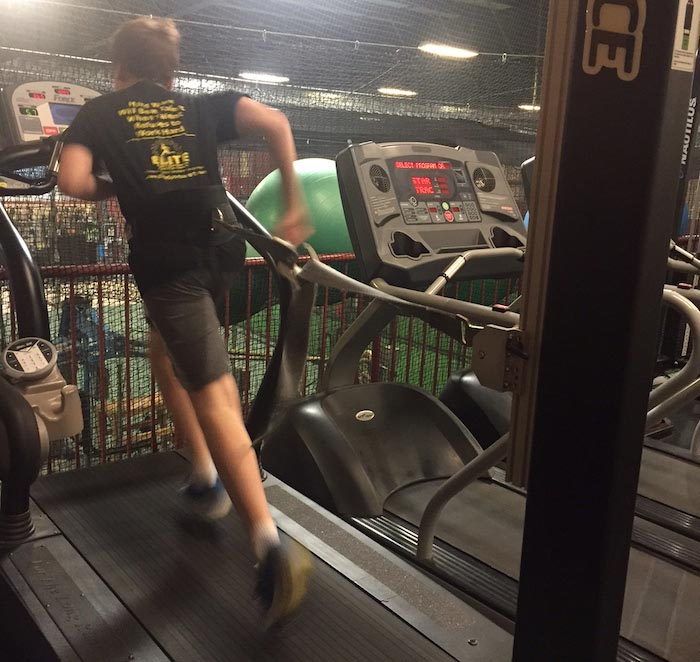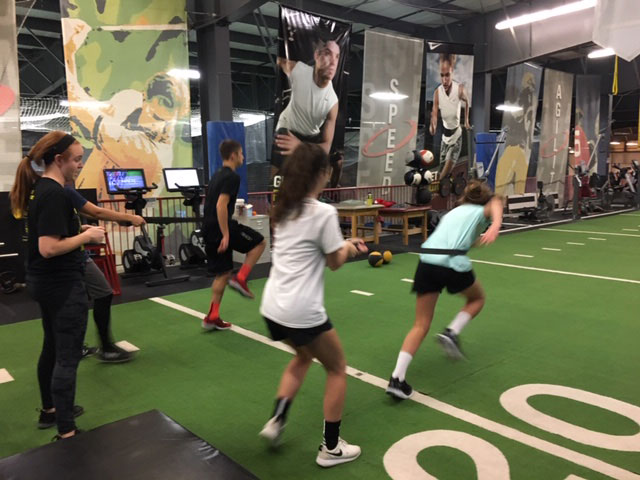Ready to Run

by Eric Farley, MPT
So you badly sprained your ankle while in an early-season soccer game. You got everything checked out with an orthopedic MD who took X-rays showing no fracture and diagnosed you with a grade 2 lateral ankle sprain. You were placed on crutches for 2 weeks and told to wear a controlled ankle movement (CAM) Boot until you return to see the doctor in 4 weeks. After 4 weeks you are feeling no pain, walking at home well out of the boot, and eager to get back to the team and play in the remainder of the season. You see the doctor and everything is looking great. The doctor gives you a prescription to begin physical therapy and tells you that you are able to return to sports once the therapist clears you. No other follow up with the doctor is needed.
AWESOME!!! You are healed and ready to run, right? Well not so fast. In the technical sense, YES, your ligament is healed, but physiologically that tissue has not been appropriately stressed to improve its tensile strength and neuromuscular control. In other words, your ankle has mended the torn portion like gluing two popsicles sticks together with Rubber Cement and securing with a piece of scotch tape. Right now your ankle is stable as long as the scotch tape holds where in time, and with progressive exercises and appropriate loading of the tissue, the glue will harden and be more durable. Additionally, when you sprained the ligaments in your ankle, your proprioceptive system, which helps you maintain balance and know where your foot is in space, was disrupted. The nervous system has sensors in the ligaments that provide information back to the surrounding muscles to move and stabilize the ankle during weight-bearing activity. Typically after a sprain, your balance and reaction time for that ankle will be very wobbly and slow. It is essential that you gradually restore this proprioceptive control to minimize the chance for re-sprain or compensations that can lead to other problems down the road.

Early return to running and sports may be possible with the use of a supportive ankle brace or taping of the ankle by an athletic trainer, but a course of progressive rehabilitative exercises and manual therapy will be necessary to regain full use of your ankle and prevent re-injury when cutting and changing directions. Your therapist will help to ensure that your ankle is functioning and reacting appropriately to higher-level activity, including jumping, hopping, twisting, and forceful push-off and loading. Many times a therapist may be able to help determine of safe return to a particular sport by utilizing performance testing (ie. Y-Balance or Star Excursion Test) and compare your scores to normative data collected for the same or similar sport. The time it takes to return to full play will vary widely from person to person, but if your goal is to return to your sport quickly and safely while minimizing the chance of re-injury, the quickest and safest route should be that through an experienced Athletic Trainer or Physical Therapist.
Here at Elite, we specialize in sports injury rehabilitation and our therapists are very experienced in treating this type of injury and helping our athletes get back to their sport as quickly and safely as possible. If you, a teammate, a friend, or family member are in need of physical therapy services, please contact us today at 781-573-4205 to schedule an initial evaluation.
